The Piece Hall, Halifax
Conservation and transformation project
Conservation and transformation project
DESCRIPTION OF THE SCHEME
Since 1779, The Piece Hall has stood proudly at the heart of Halifax. It was originally built to support the trading of pieces of cloth and has been a focal point for Halifax’s commercial, civic and cultural life for almost 240 years. Calderdale Council delivered a high-quality regeneration scheme to secure the future of the Grade I listed building. The historic fabric was sensitively and expertly conserved and modern facilities introduced to create an international destination at the centre of the vibrant cultural quarter. The required work included the repair and, where necessary, the replacement of the original stonework.
The Piece Hall transformation project was made possible by funding from Calderdale Council, a £7 million grant from the Heritage Lottery Fund – thanks to National Lottery players – and support from the Garfield Weston Foundation and the Wolfson Foundation. The Piece Hall Trust, an independent charity, runs the building for public benefit and to ensure its sustainable future.
Stone Edge was engaged as heritage masonry contractor, to carry out:
> conservation and repair of the external fabric
> the creation of new contemporary stonework openings
> new internal stone door thresholds
> replacement of stone colonnade and arcade columns
> replacement of walkway slabs
The project commenced in November 2014 and was completed in July 2017. During this time over 1,000 individual stone repairs were carried out. The total value of the project was £1,800,000.
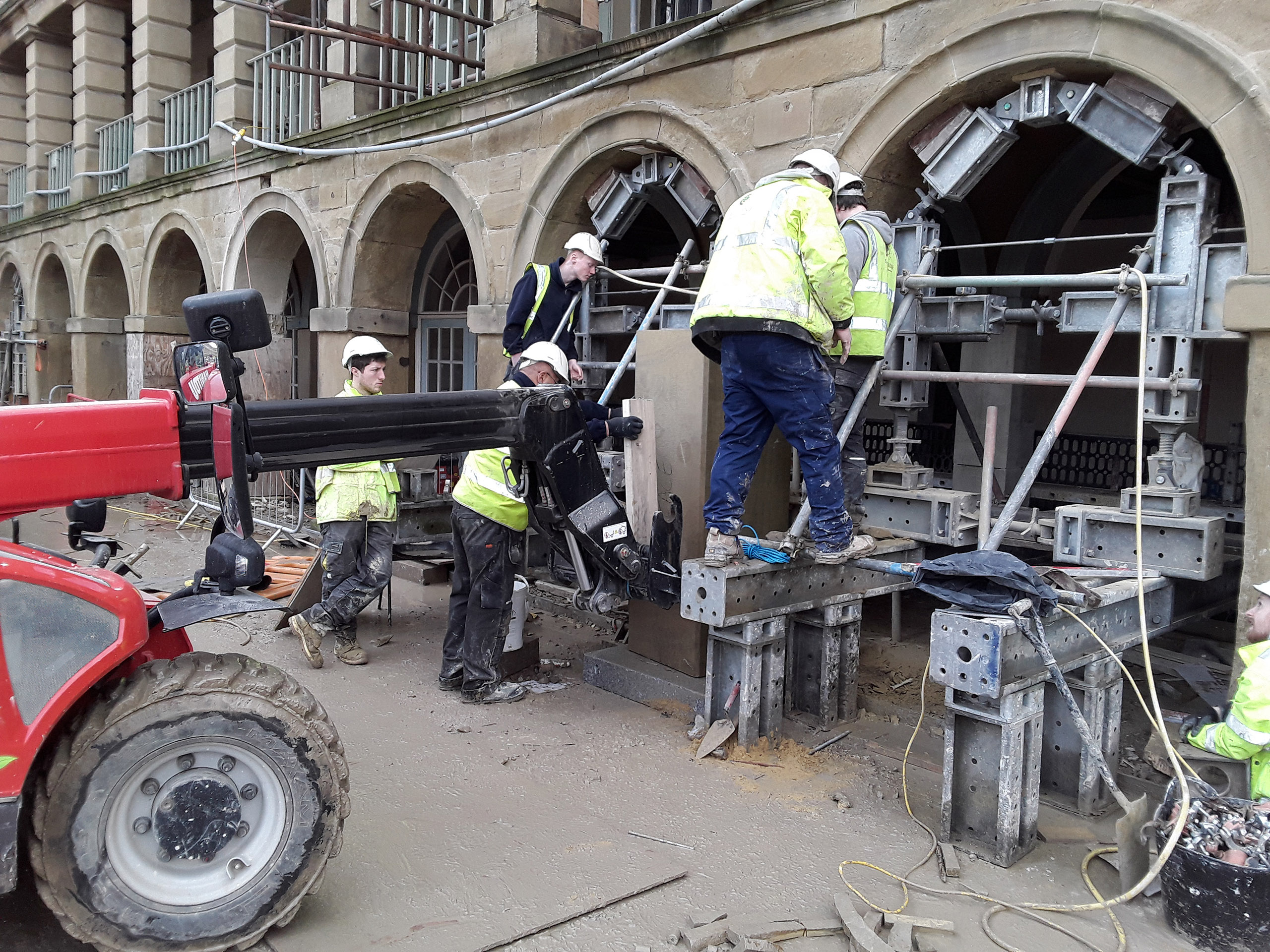
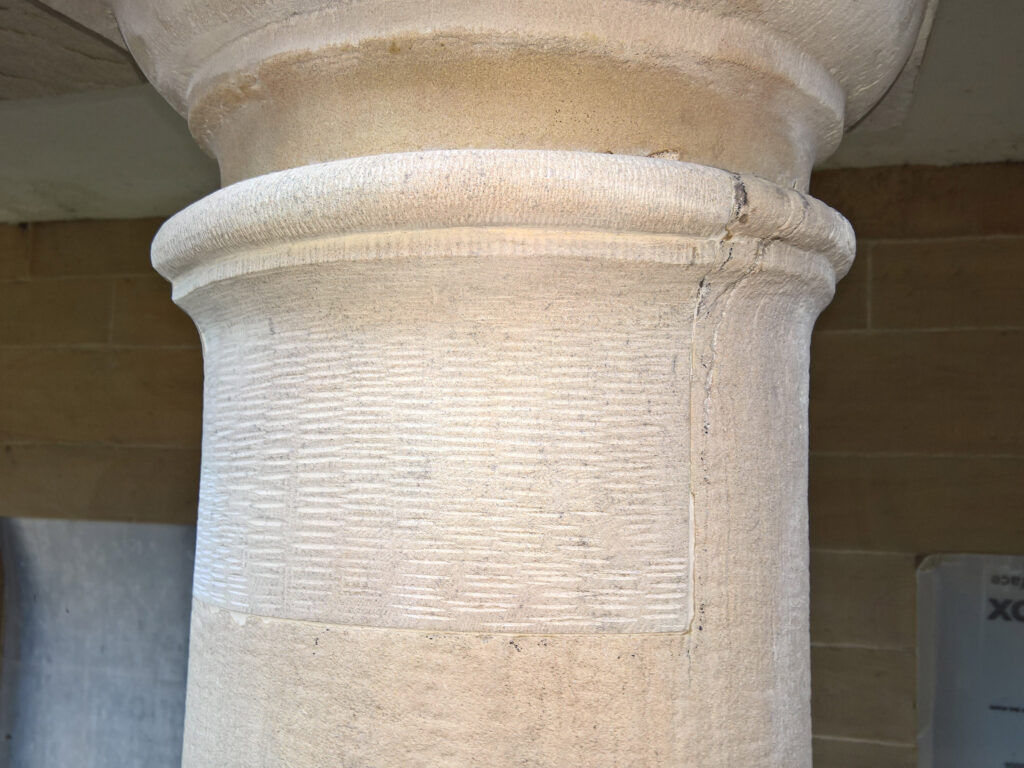
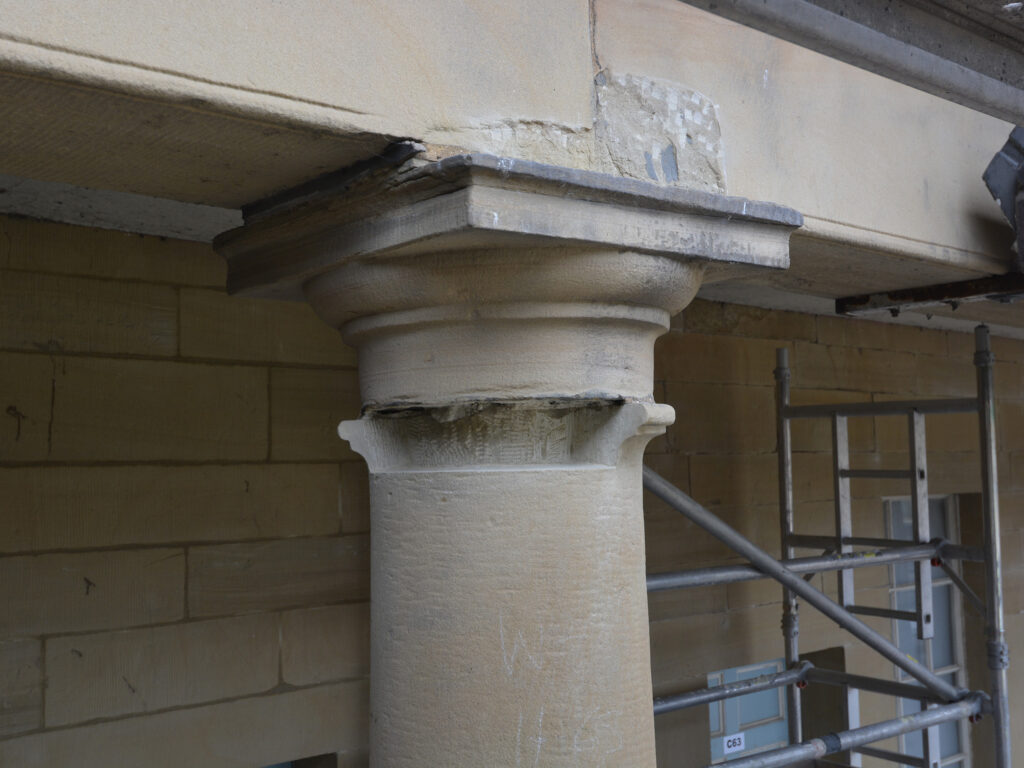
TYPE OF STONE
The original quarry, Cromwell, from which the stone was sourced when the Piece Hall was built in the 18th century, was unable to supply stone in sufficient quantities for the project. As a result, the fine-grained carboniferous sandstone used was sourced from Lower Edge Quarry, supplied by Rand & Asquith (Aceblade), which is just over the hill from the Cromwell site. This means that petrographically, and microscopically, it is an excellent match.
METHODOLOGY & FIXING METHODS
The Piece Hall is of international architectural importance: such a special place demands a high quality and expert finish. Repairs were required to be meticulously carried out, and of the highest standards of workmanship. Calderdale Council worked closely with Historic England and LDN Conservation Architects to agree the scope of essential works. As work progressed there were challenges along the way, as would be expected taking into consideration the age and complexity of the building.
All repair work had been assessed by the architects. Stone Edge used its knowledge and expertise, working closely with LDN throughout, to confirm the most appropriate type of repair in every instance and taking great care at all times. Any adjacent sound areas of the building’s fabric, including other
stones or columns, could not be damaged whilst carrying out the repairs. Stone Edge’s expert masons undertook the careful removal of stones for salvage or repair using appropriate traditional hand-tools of the correct size.
Where stone replacement was required the meticulous methodology was adhered to. This included extensive propping and protection of the historic building to allow for the installation of new and measures to allow the building to settle back. Traditional lime mortars were used to exact specifications, to ensure the most appropriate match and final finish.
When complete replacements were carried out, there was no requirement for additional fixings. Once in place, every replacement stone was individually handtooled, using the same techniques and fire-sharpened chisels as would have been employed by the original stone masons. This ensured the new stones had a uniformity and harmony of finish when compared with the old.
For time-worn stone, sections were replaced with new using indenting techniques. The old stone was removed using hand tools and mechanical grinders and stainlesssteel pins introduced into the sound stone remaining. New stone from the quarry was prepared to the required size and profile, using hand tools and mechanical grinders, with holes for the pins. Lime mortar was used to bond the stone together and point the cuts in.
Other types of repairs, however, did necessitate the use of a variety of fixing methods.
Stone Edge used a range of fixings, which included:
- Grade 316 austenitic stainless-steel fixings
- 08, 10, 12 16mm threaded rod
- 6mm x 60mm smooth dowels
- Frame cramps in cavity wall installation
- Hilti Hit HY270 resin
- Lead packers
- Slate packers
Heavy plant was used to install large stones, such as columns, lintels, jambs and floating flagstones. The plant included rubber duck excavators, telehandlers, forklifts, roustabout lifters and specially designed hydraulic grabs working together with rotators. Often, it was down to the ingenuity of the site team, using simple techniques to move large stones, inch by inch, over a day with timber wedges, packers, ropes, pulleys – and a little brute strength. Sometimes, the old methods are the best.
Extensive research and planning was undertaken to facilitate the safe replacement of two large columns on the colonnade and arcade levels of The Piece Hall.
The replacement of these columns, with the roof and cornice details intact, presented one of the biggest challenges of the project. It was not possible to sling the column from above, so an alternative methodology needed to be devised. Stone Edge developed a bespoke grab, more traditionally used to install telegraph poles. The machinery (sourced in Italy) enabled the column to be picked up from a horizontal position on the ground, rotated through 90 degrees to vertical, driven in to position and then placed very gently on its base. The column was held in position by the grab, while the capping was replaced on top.
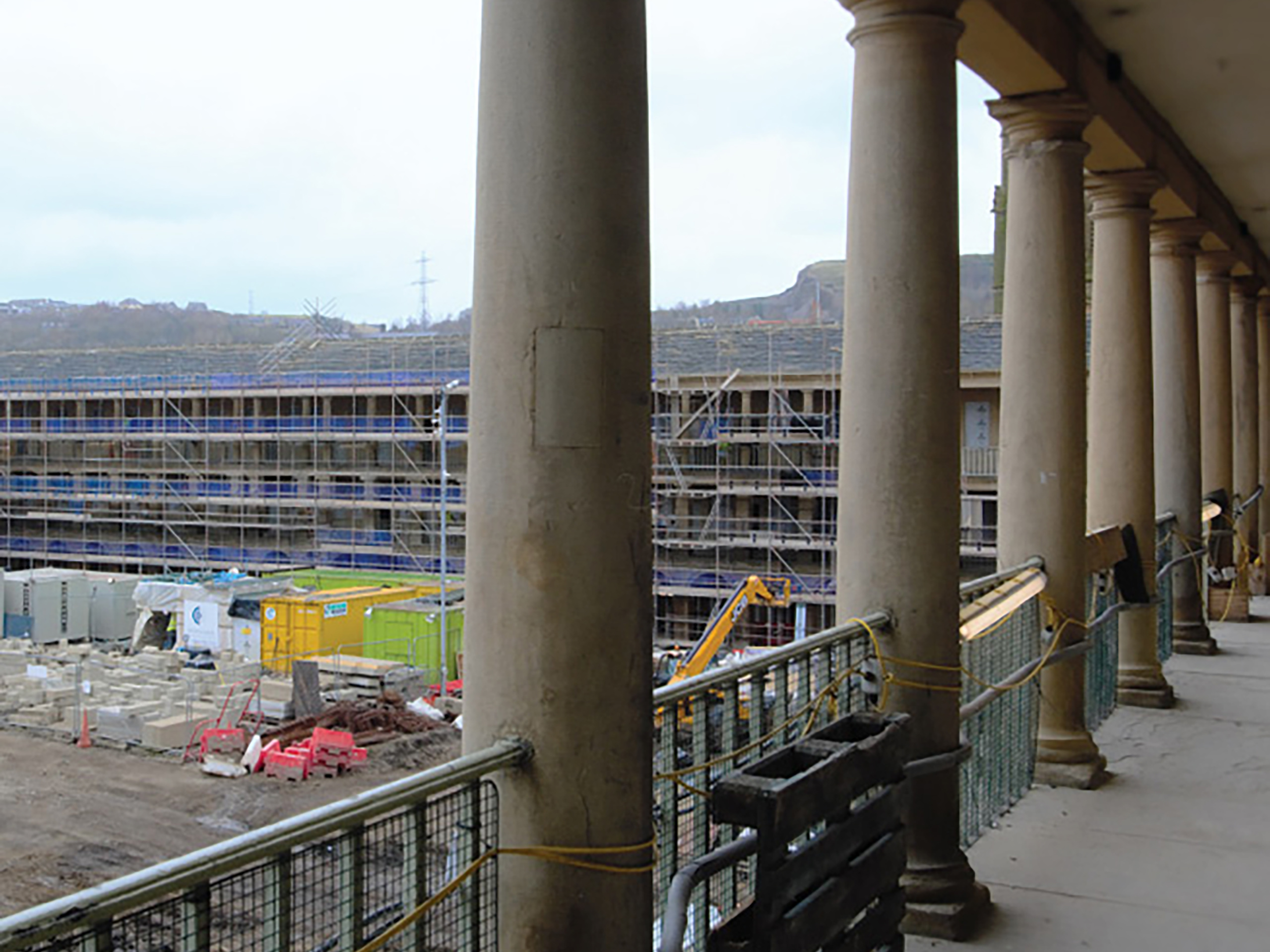
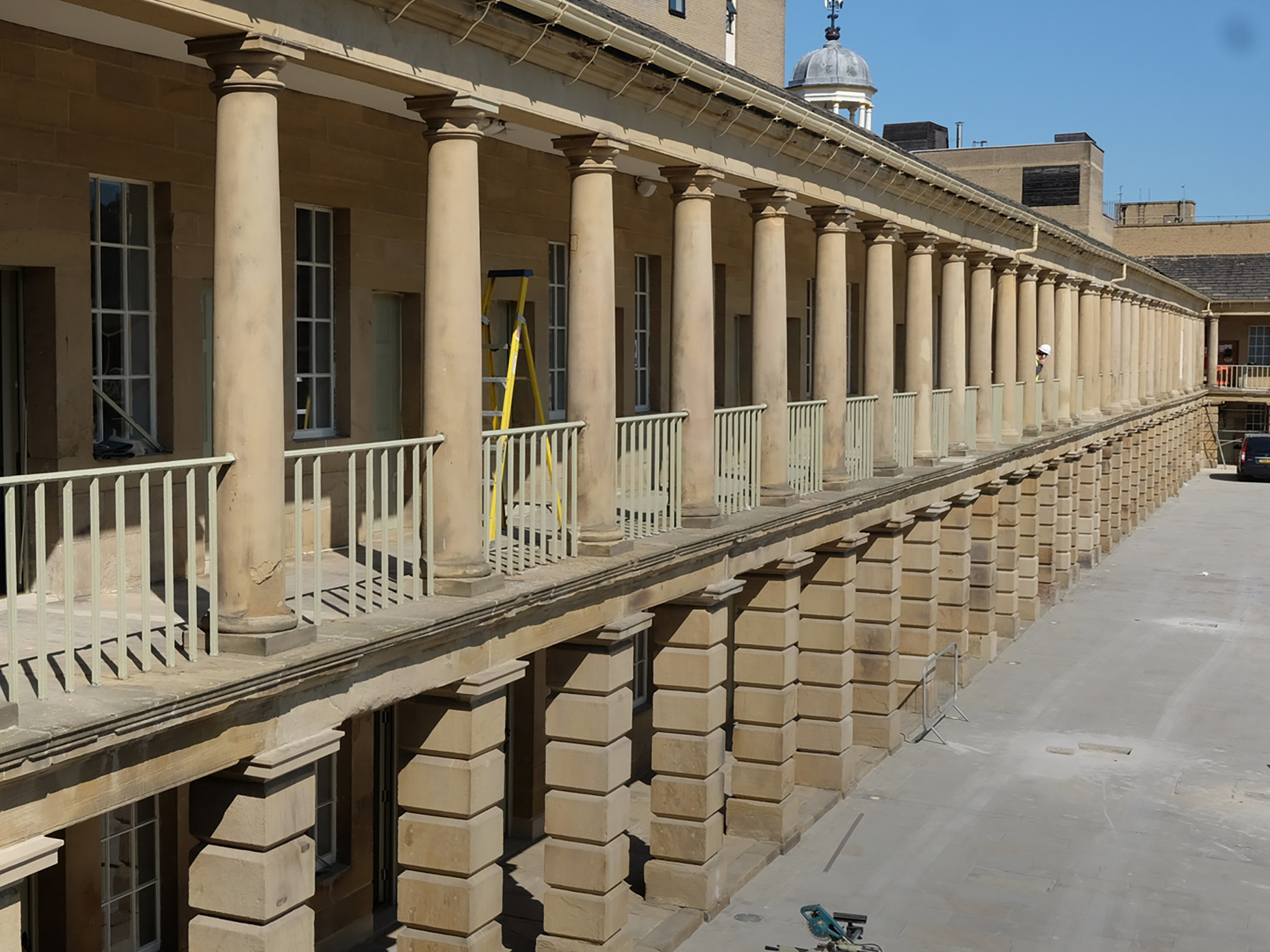
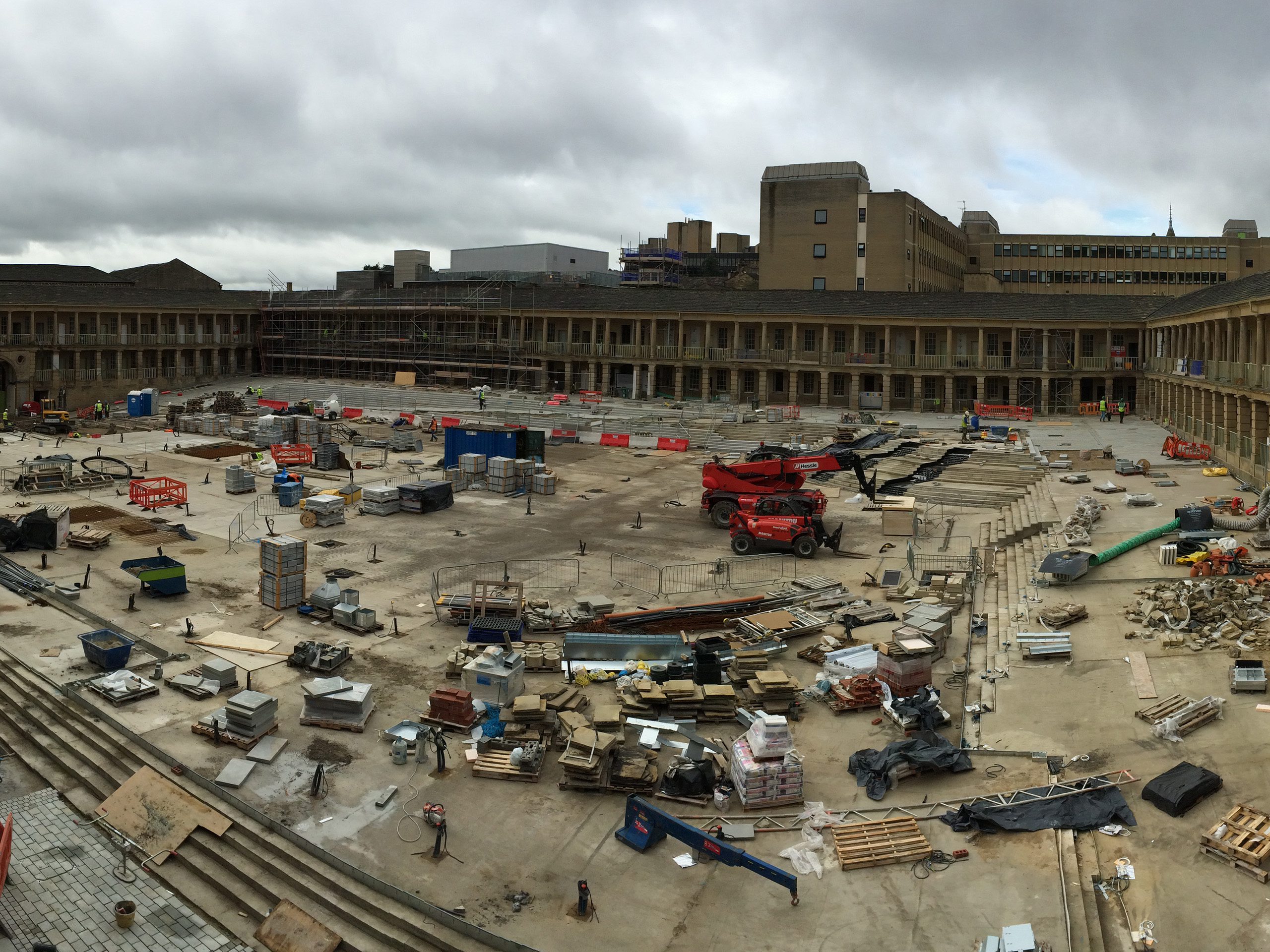
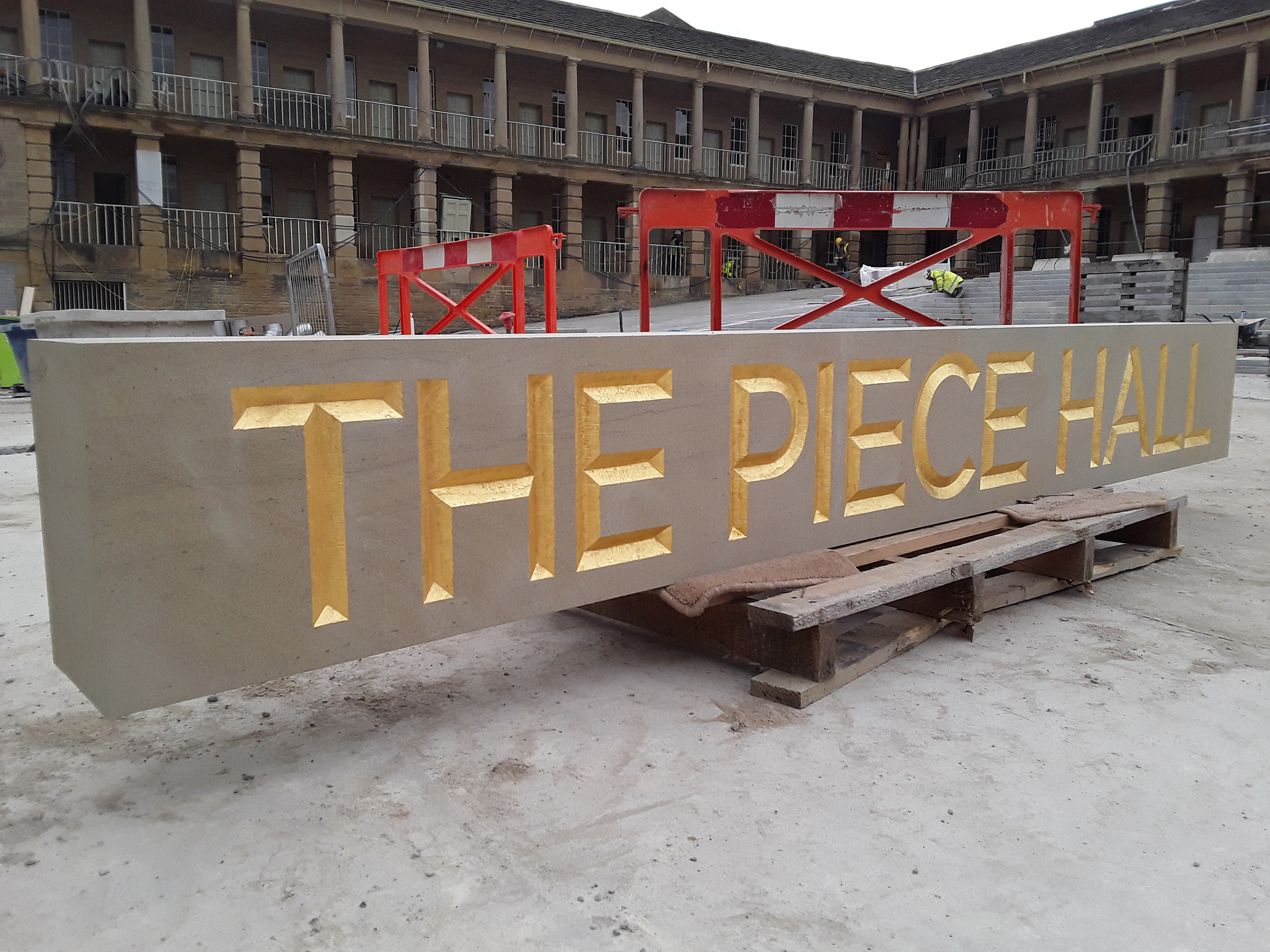
Summary
The conservation and transformation of The Piece Hall was one of the most
significant and high-profile heritage projects ever to have been undertaken in
the UK: Stone Edge is proud to have been involved in the rejuvenation of this
outstanding architectural gem. This unique, precious landmark has now been
reimagined as a thriving, contemporary leisure, retail, cultural and heritage
destination, making a major contribution to the regeneration of Halifax.
